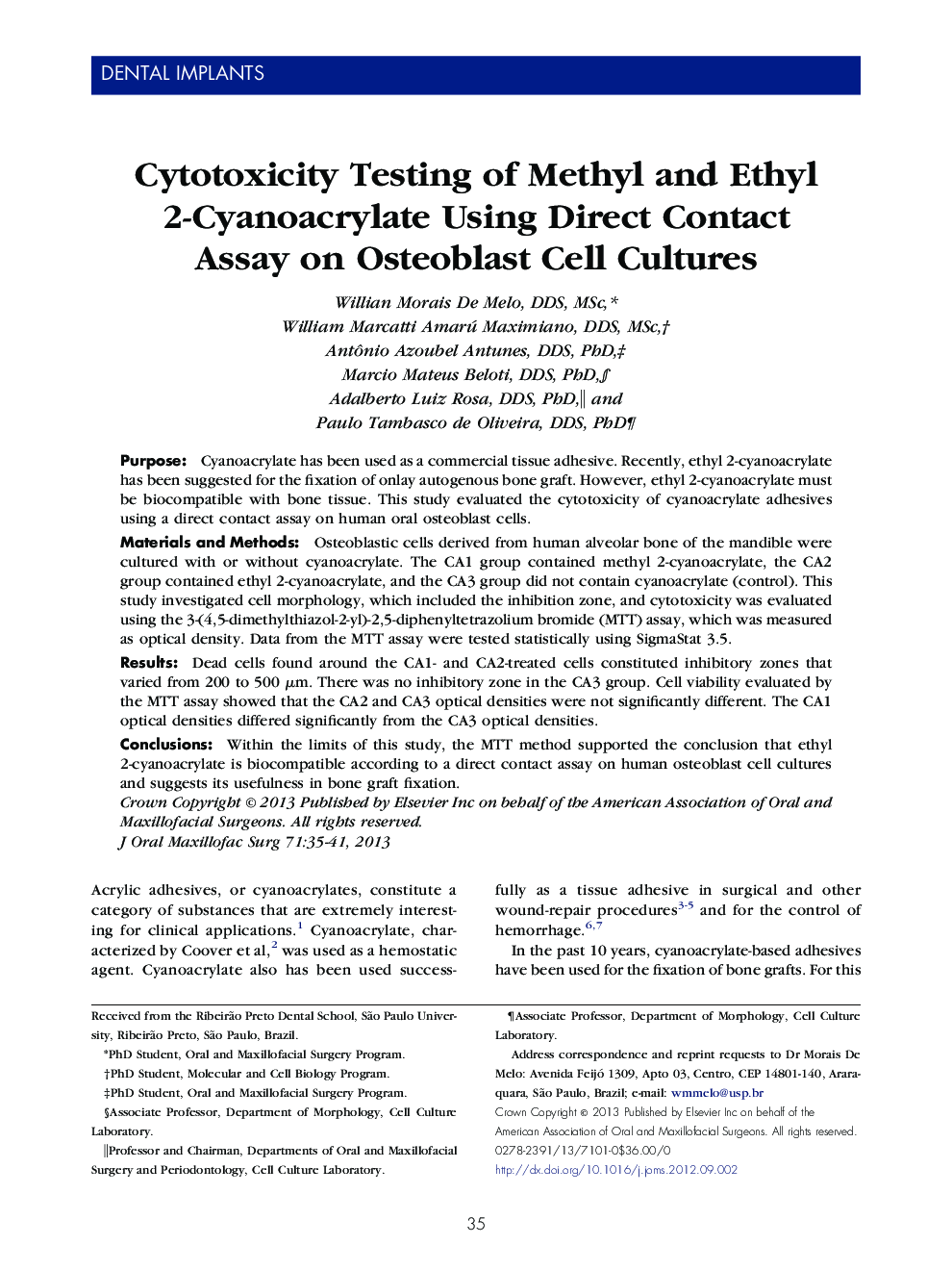| Article ID | Journal | Published Year | Pages | File Type |
|---|---|---|---|---|
| 3158005 | Journal of Oral and Maxillofacial Surgery | 2013 | 7 Pages |
PurposeCyanoacrylate has been used as a commercial tissue adhesive. Recently, ethyl 2-cyanoacrylate has been suggested for the fixation of onlay autogenous bone graft. However, ethyl 2-cyanoacrylate must be biocompatible with bone tissue. This study evaluated the cytotoxicity of cyanoacrylate adhesives using a direct contact assay on human oral osteoblast cells.Materials and MethodsOsteoblastic cells derived from human alveolar bone of the mandible were cultured with or without cyanoacrylate. The CA1 group contained methyl 2-cyanoacrylate, the CA2 group contained ethyl 2-cyanoacrylate, and the CA3 group did not contain cyanoacrylate (control). This study investigated cell morphology, which included the inhibition zone, and cytotoxicity was evaluated using the 3-(4,5-dimethylthiazol-2-yl)-2,5-diphenyltetrazolium bromide (MTT) assay, which was measured as optical density. Data from the MTT assay were tested statistically using SigmaStat 3.5.ResultsDead cells found around the CA1- and CA2-treated cells constituted inhibitory zones that varied from 200 to 500 μm. There was no inhibitory zone in the CA3 group. Cell viability evaluated by the MTT assay showed that the CA2 and CA3 optical densities were not significantly different. The CA1 optical densities differed significantly from the CA3 optical densities.ConclusionsWithin the limits of this study, the MTT method supported the conclusion that ethyl 2-cyanoacrylate is biocompatible according to a direct contact assay on human osteoblast cell cultures and suggests its usefulness in bone graft fixation.
